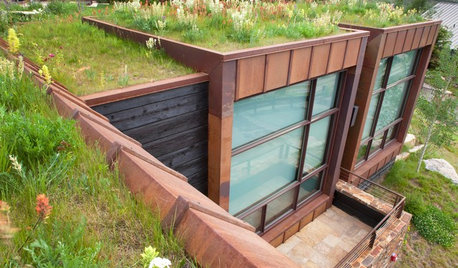Improving nutrient uptake...quickly?
greenepastures
9 years ago
Related Stories

FARM YOUR YARDHow to Get Good Soil for Your Edible Garden
The nutrients in your soil feed the plants that feed you. Here are tips on getting it right — just in time for planting season
Full Story
FALL GARDENING5 Ways to Put Fall Leaves to Work in Your Garden
Improve your soil and yard the organic way with a valuable garden booster that grows on trees
Full Story
GARDENING GUIDESGet on a Composting Kick (Hello, Free Fertilizer!)
Quit shelling out for pricey substitutes that aren’t even as good. Here’s how to give your soil the best while lightening your trash load
Full Story
GARDENING GUIDES5 Ways to Naturally Win the Weed War
Show irksome weeds no mercy with these tricks for combating them sans chemicals
Full Story
FARM YOUR YARDHow to Farm Your Parking Strip
Get an up-close look at a thriving street-side edible garden, one of many sprouting up in Seattle
Full Story
GARDENING GUIDESWhat's Wrong With My Plant? Leaves Often Hold the Clues
Learn how to identify common plant ailments by reading their leaves
Full Story
HEALTHY HOMEA Guide to Indoor Air Purifiers
Get the lowdown on air filtration systems for your house and the important ratings to look out for
Full Story
MODERN ARCHITECTUREHouzz TV: This Amazing Lake House Made a Couple’s Dream Come True
Step inside a dream home on Lake Austin, where architecture celebrating gorgeous views has a striking beauty of its own
Full Story
EARTH DAYHow to Design a Garden for Native Bees
Create a garden that not only looks beautiful but also nurtures native bees — and helps other wildlife in the process
Full Story
GREEN BUILDING6 Green-Roof Myths, Busted
Leaky, costly, a pain to maintain ... nope, nope and nope. Get the truth about living roofs and see examples from simple to elaborate
Full Story







cold_weather_is_evil
Kimmsr
Related Professionals
Maple Valley Landscape Architects & Landscape Designers · North New Hyde Park Landscape Architects & Landscape Designers · Severn Landscape Architects & Landscape Designers · Hartford Landscape Contractors · Springfield Landscape Contractors · Bridgeview Landscape Contractors · Indio Landscape Contractors · Little Ferry Landscape Contractors · Mastic Beach Landscape Contractors · Welby Landscape Contractors · West Chester Landscape Contractors · Reisterstown Landscape Contractors · Lancaster Decks, Patios & Outdoor Enclosures · Salisbury Decks, Patios & Outdoor Enclosures · Villa Park Decks, Patios & Outdoor Enclosuresgardengal48 (PNW Z8/9)
greenepasturesOriginal Author
lazy_gardens
gumby_ct
greenepasturesOriginal Author
gumby_ct
greenepasturesOriginal Author
gumby_ct
greenepasturesOriginal Author
toxcrusadr
Kimmsr
pnbrown
toxcrusadr
pnbrown
Kimmsr